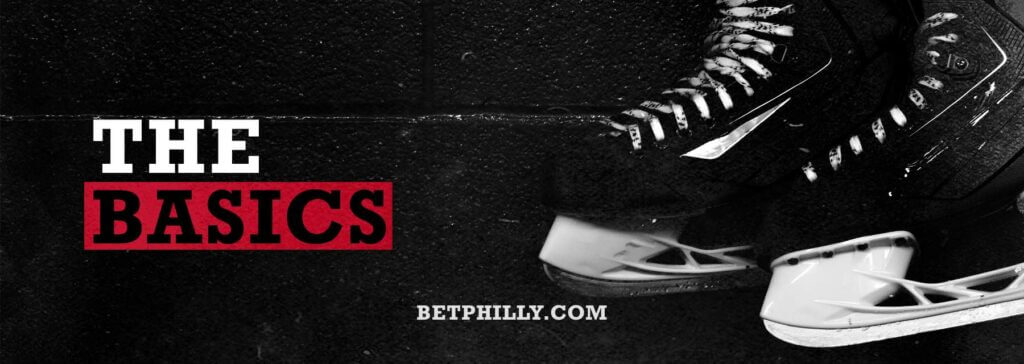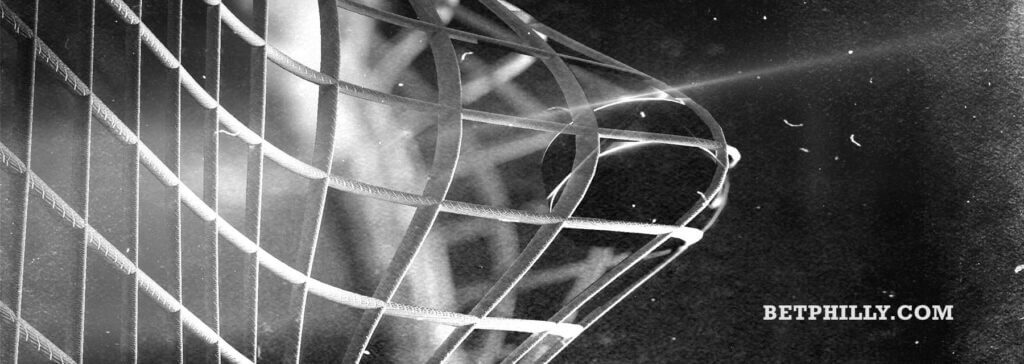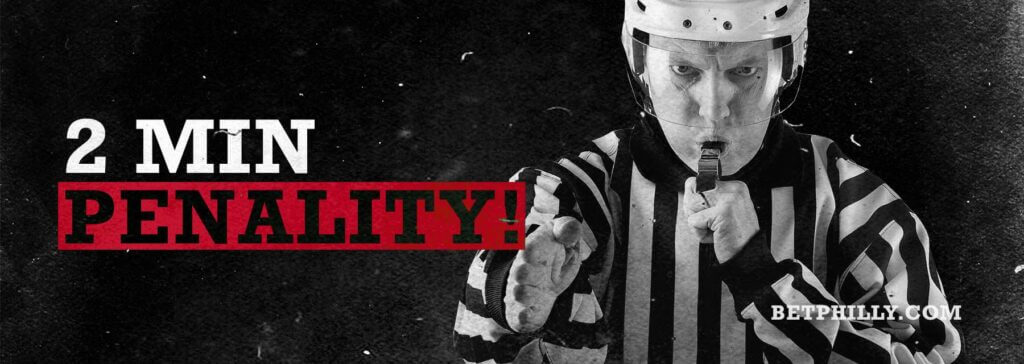Become an expert in no time
Since the NHL expanded into the United States in 1924, the NHL game rules have changed multiple times.
Generally, these changes are to regulate the sport better, while others make it significantly safer. Even so, ice hockey remains a fast-paced, exciting – and sometimes bloody – sport.
Some of the NHL rules have changed every season. As you might expect, these changes also affect different betting markets, giving fans a wide variety of exciting options.
It’s essential to understand the rules and regulations of the NHL before you start betting on NHL, however. A solid understanding of the game and how it works can help you make better-informed wagers.
If you like to make live-bets on the long NHL games during the Stanley Cup, we have all information you need to know about the NHL playoff OT rules.
Basic NHL Rules
The basic game NHL rules are quite simple. There are five players on each NHL team, as well as a goalie. Each player has a specific role, but the ultimate objective is to take possession of the puck and score a goal. Two referees monitor the game.

At the beginning of the game, the puck is dropped in the center, and the head to head battle for victory begins.
Game Objective
The objective of a hockey game is simple. In a game, the team members work together to score more points than their opponents.
Goals are scored by moving the puck down the ice from the center, making a successful shot on a goal, and scoring.
Like European football, the gameplay is fast-paced and action-packed, with only a few brief pauses for penalties, faceoffs, or intermission breaks.
Ice Rink NHL size
Any NHL rink needs to adhere to specific requirements. According to the official NHL rules, an NHL ice rink must be 200 x 85 feet. Even the corners need to fall within a specific arc range, with a radius of 28 feet.
These dimensions make them somewhat smaller than international ones. Additionally, the rink is divided into different sections.
An ice rink must include two relatively small goals on either side, and it has to be surrounded by fiberglass or wooden boards to protect attending fans.
The different ice zones include an attack and defending zone, as well as a neutral zone that extends 50 feet. Additional zones include four faceoff zones and four faceoff spots. These are all indicated in red on the surface of the ice.
Player Roles
According to NHL rules, the roster can consist of up to 23 players, divided into two roles: the forwards and the defensemen.
The forward aims to control the puck, moving it across the ice to score a goal. Defensemen, on the other hand, need to try and prevent that from happening.
There are six players in total – three forwards, two defensemen, and the goalie. Each one has a unique role:
Goalie: A good goalie can make or break a team. They shoulder a lot of responsibility and often influence a team’s confidence. A goalie has one crucial job – keep the puck out of the net.
Defensemen (Left and Right): These players need to work together to create a defensive barrier to protect the goal and prevent the other team from making a good shot.
Your defensemen usually have one of three traits: offensive but not very physical, defensive ‘bruiser’, or a hybrid of the two.
Right and Left Wing: The right and left-wing generally work their sides of the ice and cover the opposing team’s defensemen on their side.
They tend to be physical, and left wings are often left-handed. That said, right-handed left wings are becoming more prevalent.
Center: The center takes control when the puck drops and is essentially both a defensive and offensive player. A center must be good at passing and faceoffs, be a fair shot, and think creatively on their feet.
There are also ‘Player Types’ that go with different roles. Depending on a player’s strengths, weaknesses, and playstyle, they might be classified as one of these sub-types, or specialists:
- Two-way Forward / Defenseman
- Playmaker or Jumbo Playmaker
- Sniper and Hitting Sniper
- Enforcer Forward / Defenseman
- Grinder
- Butterfly Goalie
- Hybrid Goalie
Scoring
To score, NHL rules state that players must shoot the puck into a rather small goal, which measures 48” tall, 72” wide, and 40” deep.
Getting the puck into the goal scores one point for the shooting team. Naturally, the team with the highest score at the end of the game wins.

Players can also earn points for assists. At the end of a regular season, the player with the most points gets awarded the Art Ross Trophy.
NHL Teams can earn points for winning a game, drawing a game, or if a game goes into overtime. Due to issues in the past, rule changes have made it harder for games to end in a tie.
NHL Rules for Players and Teams
While several NHL rules govern gameplay, penalties, and possession, some essential rules significantly impact the flow and excitement of the game. The most notable of these is the faceoff, which occurs normally after goals, penalties or icing.
Centers usually control a faceoff; however, any player currently on the ice can participate. They have five seconds to make it to the drop – if they don’t make it, the puck will be dropped regardless.
NHL regulations require that the away team put their stick on the ice first, should the faceoff take place in the center-line dot. For faceoffs in any other zone, the defending center must place their stick first.
Other rules include the offside rule, icing, scoring, and player eligibility.
Coach Rules
Similar to players, teams, and referees, coaches also have to obey specific rules. The most important of these is with regards to challenging plays. With new regulations, coaches need to consider whether a challenge is worth the risk.
If it doesn’t succeed, they’ll receive penalties, starting with a minor and escalating from there.
Amongst other things, coaches can now challenge missed stoppages of play if it led to goals, with the condition that it happened in the offensive zone. Coaches may also issue challenges for offside and interference calls.
Time Limits and Game Duration
According to the NHL website, any game will consist of three 20-minute sessions, with a short rest intermission in between gameplay. These breaks can last up to 15 minutes and 30 seconds for general games, or 17 minutes for games that are being televised.
NHL Overtime Rules
The NHL OT rules differ depending on if the game is during the regular season, or during the NHL playoffs. There are some important differences which should be important to know when betting on a hockey game.
Below we will explain how the NHL overtime rules differ between regular season and the playoffs
NHL OT rules – Regular season
During the regular hockey season, games go into overtime if there’s no winner at the end of a 60-minute game. Both teams earns at least one point in the league standings if a game goes into overtime.
During overtime, only three skaters from each team are allowed on the ice, plus the goalie. Teams can decide to add an additional attacker and leave their goalkeeper off the ice.
However, if they do so and lose, they forfeit the point they earned for making it into overtime.
This is of course very important NHL overtime rules to know about when live betting during overtime. Because if one of the team desperately needs one extra point, they might wanna gamble with the point they already earned.
Overtime lasts for five minutes, and the first team to score wins. If there’s no winner after five minutes, the game goes into a shootout.
Each team gets three shots to claim victory. If the game remains tied, it goes into “sudden death”, where the first to score, wins.
NHL overtime rules – NHL Playoffs
The big differences between NHL OT rules in regular season and the playoffs is that they want to minimize the variance, which 3 players and shootouts often implies.
Because of this, there are other rules during the overtime in the playoffs. If a game ends a tie, the game continues with 20 minutes overtime with 5 on 5 hockey. Exactly as during the regular season, its sudden death style, which means first team to score a goal wins.
If the overtime period of 20 minutes goes without a goal, they continue the same way with a new overtime period of 20 minutes. This goes on until one team scores. With these rules, some games can go on for many, many hours.
The record for longest NHL game in history were played 1936 between Detroit and Montreal, and it laste for a total of 176 minutes and 30 seconds. That means that the game had the final goal in the 9th period.
NHL shootout rules
As we mentioned, a NHL shootout only occur if an overtime during regular season goes without any goal made. In the playoffs there are no shootouts since the game continues with overtime until one team scores.
The NHL shootout rules are more complicated than one might think, when watching a shootout.
First, we have the rules that applies for every penalty, which are the following:
- The penalty-shooter must start behind the mid blue line
- Once the player touched the puck, the puck must keep moving towards the goal
- The puck cannot stop moving or move backwards, in that case the penalty is over
- The penalty-taker can only have one shot. (So no rebounds)
- The goalie are not allowed to throw any object during the penalty
The specific NHL shootout rules are as follow:
- Each team receives three attempts where they should try to score
- If any team scores more goals than the other on these three attempts, they win the game
- If both teams score the same amount of goals, the NHL shootout sudden death rounds continues until one team scores and the other don’t. Then the gams is over.
Fouls and Violations
Actions by a player, team, or coach can be considered as a violation of the rules. Any violation will incur a penalty; depending on the illegal act’s severity, a minor, major, or match penalty can be awarded.

Some minor illegal acts include:
- Holding
- High sticking
- Hooking
- Roughing
- Tripping
- Major violations include:
- Boarding
- Spearing
- Charing
- Fighting
- Checking from behind / to the head
The different levels of penalties are:
- Minor: The offending player needs to spend two minutes in the penalty box or can be released after the opposing team scores one goal. There are also double and triple minor penalties, with an additional two minutes required in the box per penalty. Bench minors, on the other hand, are awarded when players or officials who aren’t on the ice commits a penalty.
- Major: The offending player must spend five minutes in the penalty box, with no early release allowed.
- Misconduct: The offending player needs to stay off the ice for ten minutes.
- Match and Game Misconduct Penalties: These are the most severe, and players are automatically ejected from the game and must leave the ice. Deliberately starting fights will incur a match penalty.
Other penalties include coincidental penalties, penalty shots, and gross misconduct.
Equipment
Every player must wear a few mandatory pieces of equipment, and every item must be approved by both the club and the National Hockey League according to NHL rules.
- Protective Helmets
- Mouthguards
- Team Sweater
- Shoulder and Elbow Pads
- Gloves
- Pants and Knee Pads
- Protective Cup
- Skates
- Hockey Stick
There are a few rules that apply to specific items as well. For example, skates must be made of leather, have a rounded heel, and have no toe pick.
A goalie’s equipment will also be slightly different, as they often need additional protection against the fast-flying puck. They’ll have larger knee pads and a blocking pad on their arms.
Goalies will also have a catching glove and need to wear a neck shield and chest protector as an added safety measure.
Referee and Procedures
There are usually two referees and two linesmen working to monitor any NHL game. There are several strict NHL rules that these officials need to obey while they enforce order and the rules of the game.
Referees are responsible for several aspects of the game, including dropping the puck, calling penalties, and starting faceoffs. They also work with the linesmen to review any on-ice video footage before making any final decisions or calls.
Linesmen, however, conduct faceoffs, break up fights and altercations and report any potential violations to the referees.
To identify a referee, look for an official with a striped black and white shirt and orange or red armband. A linesman won’t have the armband but will still wear the black and white striped shirt.
Player Trading Rules
Teams can trade players unless there’s a ‘no-trade’ or ‘no-movement’ clause preventing it.
A no-trade clause can be added to a contract if a player has participated in seven seasons and is over 27 years old. In this case, they can’t be traded unless they waive the no-trade clause. However, their contracts can still be bought out, or they can be reassigned to the AHL.
A no-movement is quite a bit stricter than a no-trade clause. A player still needs to meet the above criteria before it can be added to their contract. However, with a no-movement clause, a player can’t be waived, traded, or sent to the AHL. They can still get their contract bought out, though.
Trades themselves must happen within an extremely strict window. They need to take place 40 days before the season ends and must be finalized by 3 pm ET on the final day.
However, some deals may be announced later, due to NHL approval times. If the player wants to be eligible for the playoffs with a new team, they must be dealt with before the deadline.
New Changes in Rules
As we’ve mentioned before, it’s not uncommon for new rules to be introduced to the NHL every season. For example, during the 2019/2020 season, several changes were approved to keep players safer and improve gameplay.
One of these changes added an additional layer of safety to protect players. Should players lose their helmet during gameplay, they need to leave the ice immediately or retrieve their helmet.
There is a single caveat; if the player was taking action against either the goal or the puck, they could continue to play before retrieving their helmet.
Another rule change saw the NHL follow the example of many other major league sports. Referees are now obligated to review on-ice video recordings before awarding any penalties.
There will likely be more changes in future seasons. How it will impact NHL betting markets, however, remains to be seen.